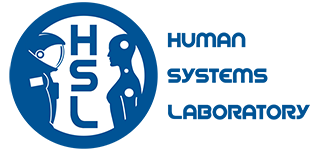MEMP PhD Thesis Defense - Katelyn Amanda Burkhart (2 p.m., 5/1, MIT E25-119/121)
"Understanding the Vertebral Fracture Risk in Astronauts"
Abstract: In spaceflight, the loss of mechanical loading has detrimental effects on the musculoskeletal system. These muscular changes will likely affect spinal loading, a key aspect of vertebral fracture risk, but no prior studies have examined how spinal loading is affected by long duration spaceflight. The effect of spaceflight on vertebral strength has not been determined, despite reports of significant vertebral trabecular bone loss in long-duration astronauts. Thus trunk muscle and vertebral bone changes and their impact on risk of injury following long-duration spaceflight remain unknown. This is of particular concern for NASA's planned Mars missions and return to Earth after prolonged deconditioning. Our lab has developed a musculoskeletal model of the thoracolumbar spine that has been validated for spinal loading, but has not yet been extended to maximal effort activities or full-body simulations. Thus, the overall goal of this work consisted of two main sections: 1) address the knowledge gap regarding spaceflight and post-flight recovery effects on trunk muscle properties, vertebral strength, compressive spine loading and vertebral fracture risk, and 2) extend our musculoskeletal modeling work into maximal effort simulations and create a full-body scaled model to investigate reproducibility of spine loading estimates using opto-electronic motion capture data.
Trunk muscle area declines returned to normal during on-Earth recovery, however post-flight increased intramuscular fat persisted in some muscles even years after landing. Similarly, lumbar vertebral strength decreased post-flight and did not recover even after multiple years on Earth. To gain insight into the effect of spaceflight on vertebral fracture risk, we created subject-specific musculoskeletal models using an individual’s height, weight, sex, muscle measurements, and spine curvature. We found that compressive spine loading was minimally increased post-flight and vertebral fracture risk, calculated as a ratio of vertebral load to strength, was slightly elevated post-flight and remained elevated during recovery. Additionally, we focused on the development of additional musculoskeletal modeling tools. Using maximal effort model simulations, we estimated trunk maximum muscle stress in an elderly population, and this critical parameter in musculoskeletal modeling will assist with more detailed model creation. Lastly, we found excellent reliability of spine loading estimations from opto-electronic marker data.
Thesis Supervisor:
Mary L. Bouxsein, PhD
Director, Center for Advanced Orthopaedic Studies, Beth Israel Deaconess Medical Center
Professor of Orthopedic Surgery, Harvard Medical School
Thesis Committee Chair:
Leia Stirling, PhD
Charles Stark Draper Assistant Professor of Aeronautics and Astronautics, MIT
Associate Faculty, Institute for Medical Engineering and Science, MIT
Thesis Readers:
Dennis Anderson, PhD
Assistant Professor of Orthopedic Surgery, Harvard Medical School
Andrea Hanson, PhD
CNS/BMed/Sensorimotor (CBS) Portfolio Manager, Human Factors and Behavioral Performance Element, NASA Johnson Space Center
